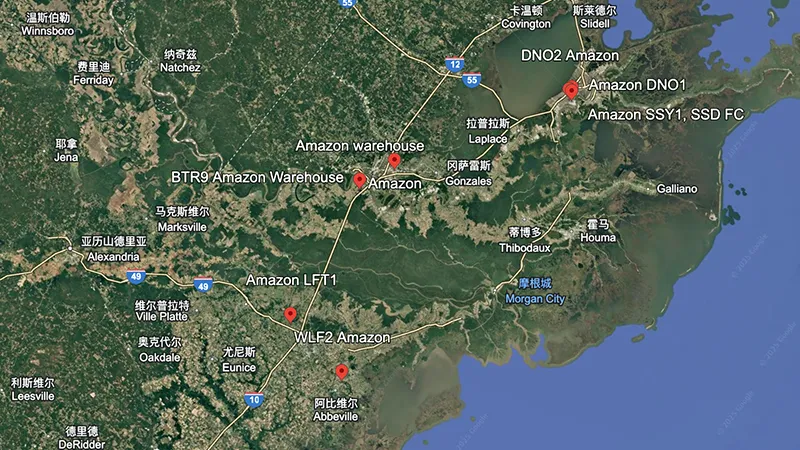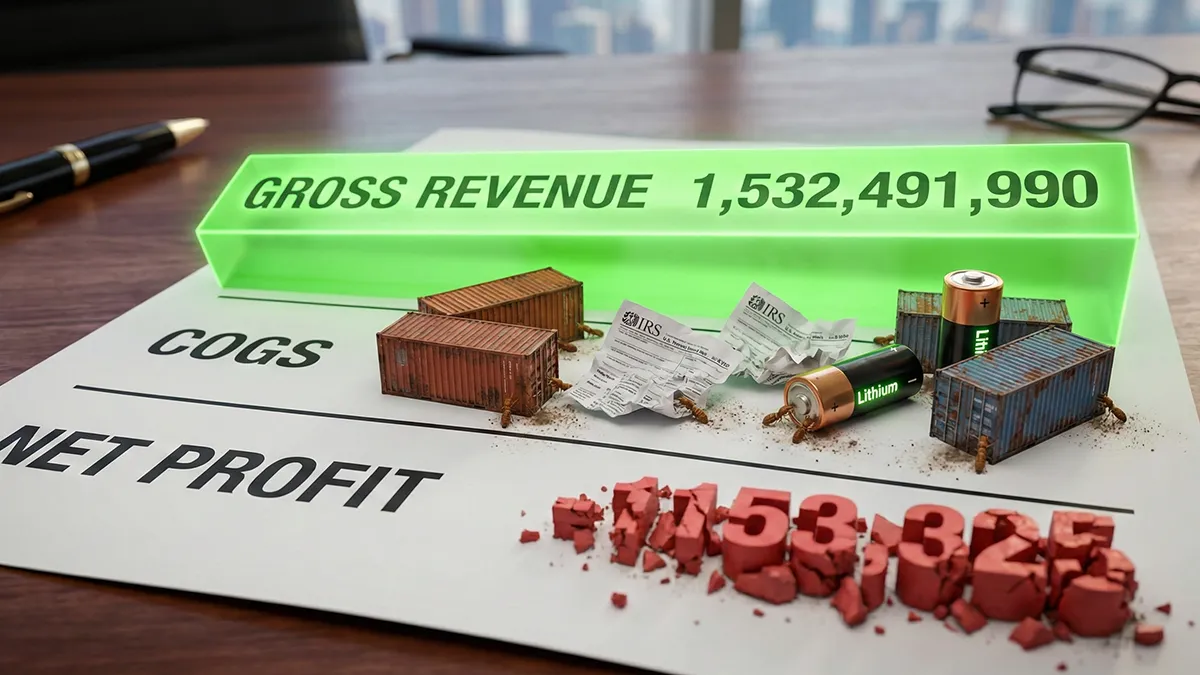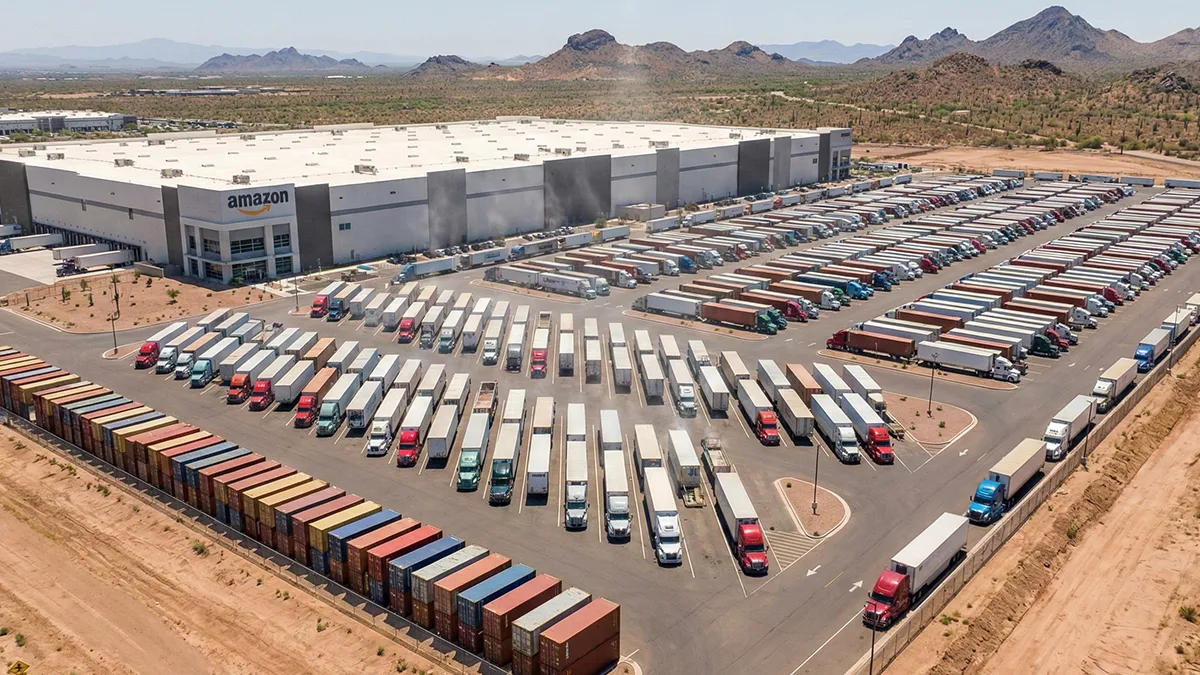Amazon Warehouse Locations in Louisiana (2025 Guide)
verified Louisiana Amazon sites and addresses for BTR1 (9001 Cortana Pl, Baton Rouge, 70815), BTR9 (3191 Webster Ln, Port Allen, 70767), DLB2 (11100 Honore Ln, Baton Rouge, 70809), DNO1 (5042 Bloomfield St, Elmwood, 70121), DNO2 (5733 Citrus Blvd, Elmwood, 70123), LFT1 (3550 NE Evangeline Thruway, Lafayette/Carencro, 70507), SHV1 (1625 Corporate Dr, Shreveport, 71107), and WLF2 (3221 Veterans Memorial Dr, Abbeville, 70510).
Why this guide
If you’re an Amazon FBA seller, brand, or supply-chain manager shipping from China or Southeast Asia into the U.S. Gulf region, Louisiana can be a smart node: you get I-10/I-12/I-49/I-20 coverage, proximity to Port NOLA for ocean routings, and a compact cluster of FC/SC/DS assets serving Baton Rouge, New Orleans (Elmwood), Lafayette, and Shreveport. This guide compiles the verified warehouse list with practical inbound advice (appointments, labeling, carton/pallet planning, and lane selection). We exclude job-seeker info and “near me” fluff—just the operations data you need.
The verified list (codes, addresses, facility type)

Notes: We list the commonly used site codes and civic addresses shippers use on BOLs and appointment requests. Where suburban boundaries blur (e.g., Lafayette vs. Carencro), we keep the street address intact.
-
BTR1 — Fulfillment Center
9001 Cortana Pl, Baton Rouge, LA 70815 (East Baton Rouge Parish). The former Cortana Mall redevelopment is widely referenced as Amazon’s Baton Rouge FC.
-
BTR9 — Sortation Center / Large Sorting Site
3191 Webster Ln, Port Allen, LA 70767 (West Baton Rouge Parish). Property and industrial listings identify this address with Amazon operations (often referenced as “Amazon Distribution Center”).
-
DLB2 — Delivery Station
11100 Honore Ln, Baton Rouge, LA 70809 (East Baton Rouge). Facility references appear in local company and directory listings.
-
DNO2 — (Elmwood) Fulfillment / Same-day node in Jefferson Parish
5733 Citrus Blvd, Elmwood, LA 70123 (Jefferson). Address appears in regional job listings tied to Amazon operations.
-
DNO1 — (Elmwood) Fulfillment / Processing site
5042 Bloomfield St, Elmwood/New Orleans, LA 70121 (Jefferson). Cited in infrastructure research aggregations of Amazon sites.
-
LFT1 — Fulfillment Center (Lafayette/Carencro corridor)
3550 NE Evangeline Thruway, Lafayette (Carencro area), LA 70507. Public FC directories list this address for LFT1.
-
SHV1 — Fulfillment Center (Shreveport)
1625 Corporate Dr, Shreveport, LA 71107 (Caddo Parish). Referenced across local commerce and workforce pages.
-
WLF2 — Abbeville node (last-mile / small-parcel operations)
3221 Veterans Memorial Dr, Abbeville, LA 70510 (Vermilion). Confirmed in local civic postings and community updates.
Why no Google Map links? To avoid broken links and keep this page fast, we provide clean, shipper-ready addresses. If you want a version with map links, say the word and we’ll add a checked set.
How to use these Louisiana nodes in your inbound plan
I’ll keep this actionable and grounded—what we actually do with FBA clients routing into LA.
1) Choose the right node (FC vs. SC vs. DS) for your shipment profile
-
FC (BTR1, LFT1, SHV1, DNO1/DNO2) is where cartons/pallets arrive for stow/pick/pack. If your PO is created to a specific FC, ship directly there. If Amazon assigns a split (multiple FCs), weigh consolidation vs. split-ship: higher linehaul cost for multiple drops can be offset by lower downstream transfers and faster check-in.
-
SC (BTR9) becomes useful when Amazon workflows push parcels to sortation prior to last-mile. From a shipper perspective, you don’t “choose” SC; Amazon’s network does. But understanding the SC geography helps you anticipate ultimate service areas for your SKUs.
-
DS (DLB2, WLF2) are last-mile. Unless you’re doing a specialized transfer or a planned transload/rework, you won’t consigned-ship to DS for FBA; instead, your cartons flow there after FC/SC processing.
If you’re new to this structure, Amazon’s public FBA Packaging and Prep Requirements is still the canonical baseline for getting cartons and pallets accepted without chargebacks or rework. We always align our labeling/pack plans to that document before booking.
2) Build cartons and pallets that clear Louisiana’s FC docks the first time
Two killers of inbound velocity are bad carton labels and non-compliant pallets. Before you finalize your ASN:
-
Align carton labels, scannability, and box content info with Amazon’s help guidance (box content, barcode/label placement). It’s mundane—and absolutely non-negotiable.
-
If you’re shipping mixed-SKU cartons, ensure content declarations match reality. I’ve seen perfect routings get tanked by misdeclared box content requiring FC rework. Amazon’s Box Content Information explainer remains a good refresher.
-
Louisiana FC docks behave like any other Amazon FC: standard 40x48 pallets, stretch-wrapped, with visible pallet labels on at least two adjacent sides. Don’t over-height beyond Amazon’s pallet cap for the assigned FC.
3) Appointments & gates: plan for I-10/I-12 flows and Port NOLA variability
-
Baton Rouge / Elmwood (New Orleans) sites live off the I-10 corridor, with I-12 relieving through Hammond if you’re bypassing New Orleans metro. In peak windows (holiday, storm recovery), gate congestion around the Mississippi River crossings can creep.
-
If you’re ocean-anchoring to Port of New Orleans (Port NOLA) and transloading to truck for FC delivery, remember that container availability, yard moves, and NOPB on-dock rail all influence first-mile timing. Port NOLA’s own container service materials outline the container/rail integration that underpins those drays. We plan buffers accordingly.
Bookings & appointments. Whether you use Amazon’s partnered program or your own carrier, follow Amazon’s “Book a delivery appointment” guidance to lock slots and avoid dwell. We handle this daily for clients; the public help page is still the blueprint process.
4) When splits happen, control landed cost with smart consolidation
If the PO splits to, say, BTR1 + DNO2, compare three options:
-
Factory-level split → two direct FC consignments (higher origin handling, lower domestic shuffle).
-
Consolidate in China (or Shenzhen/Ningbo hub) → one U.S. landing, then transload/relay to each FC (good when you can secure a superior ocean rate and reliable domestic TL/LTL).
-
U.S. gateway consolidation → land West Coast (or Houston), rail/truck to LA FCs (useful if Gulf schedules are tight or Port NOLA berths are constrained).
There’s no one-size play; we run landed-cost math that bakes in rates, check-in SLAs, and seasonality. If you’re comparing Louisiana vs. nearby Mississippi/Texas nodes, our Maryland state guide shows the same FBA logic we apply in cluster builds—helpful for seeing how we standardize across states. (For a lateral read on our approach, see Amazon Warehouse Locations in Maryland.)
5) Plan around Gulf weather and festival calendars (New Orleans is unique)
Hurricanes are the obvious watch-item, but New Orleans-area events (Mardi Gras, major sports weekends) can tighten short-haul capacity or change truck routing windows. We don’t over-engineer the risk—but we add 0.5–1.0 day of slack in those weeks and book earlier slots for Elmwood FCs (DNO1/DNO2) to absorb surprises.
6) Ocean vs. air: when Louisiana wins
If you’re pushing bulk replenishment and can accept 25–35 day door-to-door timing, Gulf discharge + truck into BTR1/LFT1/SHV1 is often a cost-efficient play. For seasonal spikes or launch fills, we fly into IAH or MSY then truck same- or next-day to the FC—always with labels squared to avoid appointment knockbacks. Align with Amazon’s routing rules (package prep and carrier expectations) before you commit uplift.
County-by-county snapshot (how to think about each cluster)
Baton Rouge (East/West Baton Rouge Parishes)
-
BTR1 (FC) handles standard FBA inbound; it’s the anchor for the capital region and sits right off I-12/I-110 access via I-10. The site’s Cortana footprint makes TL/53’ trailers straightforward.
-
BTR9 (SC) over the river in Port Allen supports sorting flows; you won’t consigned-ship to it for FBA, but it impacts where parcels route downstream.
-
DLB2 (DS) on Honore Ln is last-mile; keep it in mind if you run retail or FBM programs co-located in the metro.
Inbound tip: eastbound trucks on I-10 can bottleneck near the Mississippi River Bridge. We bias appointment windows away from peak commuting hours to cut detention risk.
New Orleans / Elmwood (Jefferson Parish)
-
DNO2 (Citrus Blvd) and DNO1 (Bloomfield St) sit in the Elmwood industrial corridor—close to the river terminals and arterial access. Elmwood is well-used for fast-cycle SKUs.
-
If you deploy Port NOLA → transload → FC plays, tight coordination among terminal, chassis, and appointment windows pays off. Port NOLA’s deep-water container capability and on-dock rail (NOPB) mean good options in normal weeks and faster recovery after Gulf hiccups.
Inbound tip: If a vessel ETA slides, a same-day dray + pre-stage near Elmwood can protect you from demurrage and keep your FC appointment the next day. (We only pull that lever when the math beats leaving the box on terminal.)
Lafayette / Carencro (Acadiana)
-
LFT1 on NE Evangeline Thruway covers Lafayette, Opelousas, and the Acadiana halo. It’s a solid FC for bulky/light mix and general FBA.
Inbound tip: If you’re routing from Houston or Lake Charles, I-10 timing is predictable; storm restoration traffic is the main exception. We pair LFT1 deliveries with Houston-landed freight when Gulf schedules align.
Shreveport (Caddo / I-20 corridor)
-
SHV1 on Corporate Dr serves Shreveport-Bossier and I-20 / I-49 flows. It’s strategically useful if you’re spreading inventory into North Louisiana or feeding Arkansas/Texas edges.
Inbound tip: Consider Dallas-Fort Worth gateway air or rail+truck when Houston is tight; we’ve seen total transit hold steady while cost stays competitive.
Abbeville (Vermilion)
-
WLF2 is a smaller last-mile node with a Vermilion footprint. It’s not an FBA consignment target; treat it as context for regional delivery.
Clean inbound execution: the short checklist we use
-
Confirm FC & address from your Shipment ID—ensure labels match the FC that Amazon assigned (don’t “choose” a different Louisiana site because it’s closer).
-
Validate packaging & prep (carton labels, suffocation warnings, over-boxing, liquids, fragile) against Amazon’s public guide. This avoids dock holds and rework.
-
Declare box content correctly in Seller Central (or via your 3PL’s EDI). Carton-level truth prevents inbound defects.
-
Book delivery appointment early. For FCs around Baton Rouge/New Orleans, mid-morning/early-afternoon slots typically minimize urban congestion.
-
Plan Gulf buffers (weather, festival days) and watch Port NOLA schedules if you’re draying from the river.
-
Document everything (BOLs, pallet photos, seal numbers). If anything slips, clean documentation speeds resolution.
Common questions
Q: Can I request to deliver to BTR1 instead of DNO2?
A: No—Amazon assigns destinations based on its network logic. We work inside that constraint by optimizing consolidation and domestic relays to hit cost/time targets.
Q: Should I split by product category (hazmat vs. non-hazmat) for Louisiana FCs?
A: Yes. Separate hazmat/non-hazmat at origin so your labels, MSDS, and declarations align with the FC’s capabilities. Mixing them creates rework, delays, and sometimes re-routing.
Q: How do I minimize appointment push-outs?
A: Lock slots early (especially during Q4 and Louisiana’s weather windows), avoid Friday late-day arrivals, and deliver compliant pallets. Amazon’s appointment workflow is standardized—following the playbook is the edge.
Internal reads to deepen your state cluster strategy
When you scale beyond Louisiana, you’ll want consistent process across states. For patterns and comparable tables:
-
Dive into our Maryland coverage for another mature cluster we service: Amazon Warehouse Locations in Maryland
-
Planning Midwest distribution? Our Michigan state guide applies the same FBA inbound logic to Detroit/Grand Rapids/Lansing flows (see /news/amazon-warehouse-locations-michigan).
-
Building a Southwest node mesh? Cross-reference our New Mexico or Colorado pieces for how we route I-25/I-40 edges (see /news/amazon-warehouse-locations-new-mexico and /news/amazon-warehouse-locations-colorado).
(If any of those pages aren’t live yet on your side, tell me which three internal pieces you prefer and I’ll swap them in.)
Why work with us on Louisiana lanes
We’re a China-to-USA/EU freight forwarder specialized in Amazon FBA with DDP sea/air programs, labeling/compliance, ASN handling, and delivery appointment management into BTR1, DNO1/DNO2, LFT1, and SHV1. As an Amazon SPN & ShipTrack partner, we keep your shipments inside Amazon’s rules while reducing touches and dwell.
Let’s make your next Louisiana replenishment boring (in a good way).
Have a shipment to plan for BTR1, DNO2, LFT1, or SHV1? Contact us and we’ll build the lane, book the slot, and deliver on schedule—start here: Contact ZBAO Logistics.


